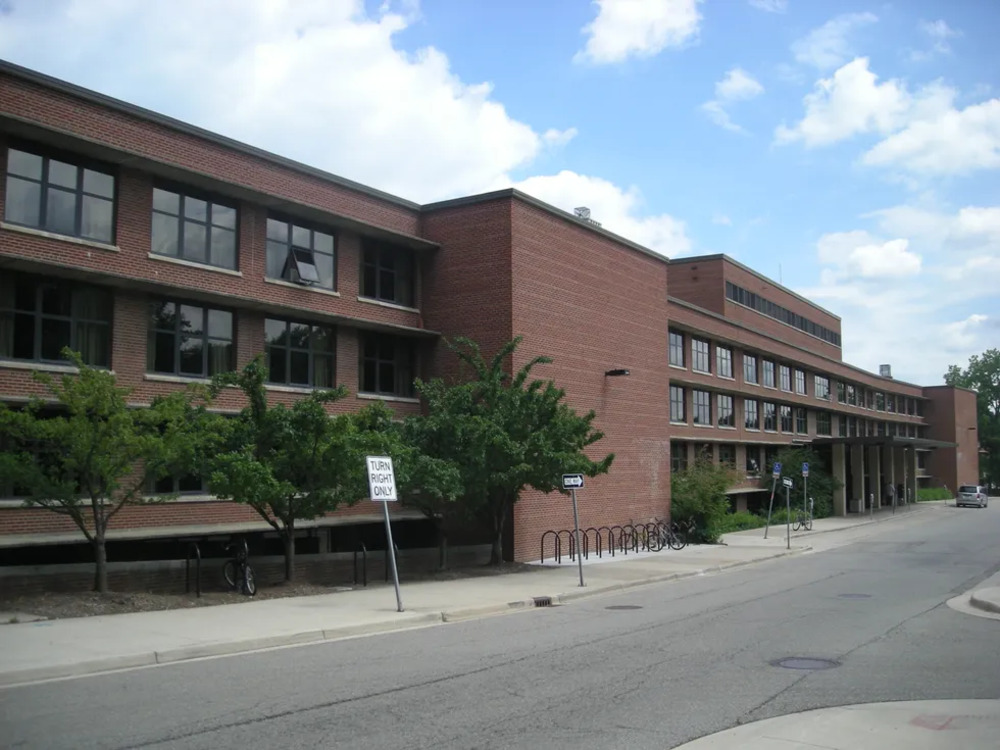Local Comparison
by Kelsey Reviello
The LSA building was designed and built by the Harley Ellington, and Day company in 1948. This structure was built to provide a space for administration and for students to achieve their academic goals and use the support functions available to them. Although, we know it today for its focus as a hub for the individuals within the LSA program.
A lot of our research takes a broader perspective when looking at the LSA building and the other architectural structures that Halrey Elligton, and Day built. But, while finding other establishments with similarities and differences in other parts of the country, there was one right on campus. Mary B. Markley Hall was built in 1958 and is used as a first year residents hall at the University of Michigan. Although the LSA and Mary B. Markley Hall buildings are very symmetrical with their various windows and specifically placed pillars, there are a few large differences. To begin with the LSA building is covered with a lighter brick and various modern materials like steel and piercing ocean blue glass that runs from top to bottom. On the opposing side is Mary B. Markley Hall which is built with a dull brick that is paired with a dark glass that covers the building. It makes you consider the popular design trends that were going on during each of these time periods. The 1940s sided with a very contemporary and mid century modern theme in its architecture. This style included rectangular glass block windows, curved corners, and a boat-like appearance. When looking at the LSA structure you start to pick out the specific windows and the different layers of the building and shape seem to simulate a boat. On the other hand the 1950s transitioned into a brutalist architecture, which developed after World War ll in the United Kingdom. This type of architecture highlighted a monochrome theme, raw concrete or brick exteriors, little ornamentation, and a block heavy appearance. This description helps explain why Mary B. Markley Hall’s design stood out from the LSA building. The dorm hall stands out because of its bulky design that has very little detail and comes off as dull compared to the LSA building. These structures were constructed only about ten years apart by the same company, yet it seems there were more differences than similarities.
Sources:
A historical tour of the University of Michigan campus. (n.d.). https://bentley.umich.edu/legacy-support/campus_tour/chronology.php
https://umaec.umich.edu/Regents/byMonth/1999/Jul99/LSA.pdf
Campus Map | Campus Information. (n.d.). https://maps.studentlife.umich.edu/building/literature-science-and-the-arts
Mary Markley Hall. (n.d.). https://tour.umich.edu/text-based/locations/mary-markley-hall/
Hohenadel, K. (2023, September 8). What is Brutalist architecture? The Spruce. https://www.thespruce.com/what-is-brutalism-4796578
Created For
K-12 EducatorK-12 Student
Museum Visitor
UMMA Docent
UMMA Staff
University Faculty
University Student
Rate this Resource
AVG: 0 | Ratings: 0
& Author Notes
All Rights ReservedLast Updated
December 2, 2023 10:02 p.m.Report
Reporting Policy


